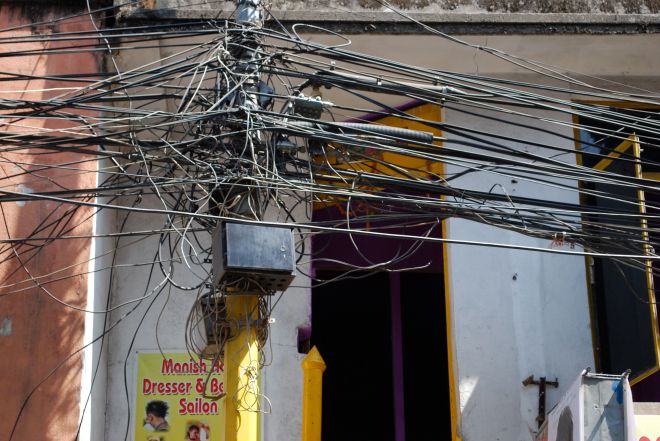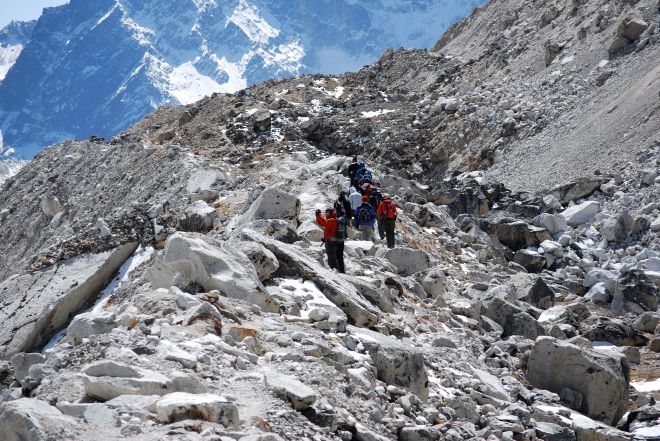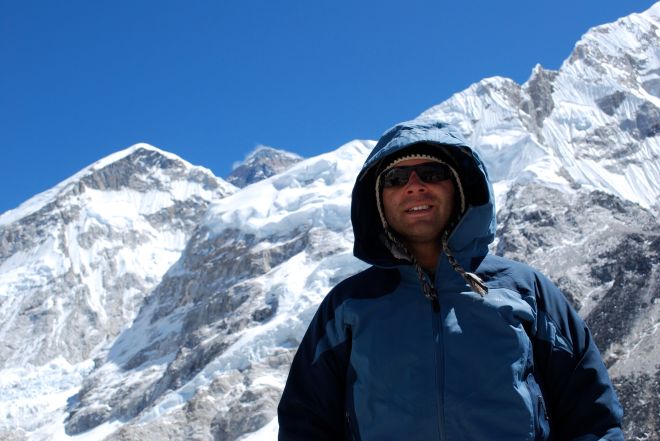Kathmandu, Nepal
With egg sandwiches and cups of coffee from Pumpernickel Bakery, we set out today — the last day of our trip in Nepal — for Bhaktapur, once a competing capital of medieval Kathmandu Valley. This small city of 65,000 has been wonderfully preserved by a hefty $10 USD entry fee for tourists that goes toward restoration and maintenance.
Our cab driver from yesterday, Diamond, took us on the 1-hour drive beyond Kathmandu’s maddening traffic and dropped us off just before Bhaktapur’s vehicle-free zone. “We’ll meet you here in 2-3 hours,” we said. “Sure, no problem,” Diamond replied.
We were met with a tout for a guide, Horry, who spoke surprisingly good English. He was willing to show us around for just about $1 USD per person, which we happily agreed to. Horry brought us around the city’s three squares — with towering temples set against a rural backdrop.




Wandering the narrow cobblestone streets brought us past countless vendor stalls, temples, statues, cisterns and wells. And as promised, the city’s squares were filled with fantastic architecture — exquisite wood, metal and stonework detail.



As was somewhat expected, Horry also brought us to a few workshops of painters, potters and woodworkers – those which would provide him with a kickback for any purchases. We negotiated with the artists and ended up buying a few small items.


With far fewer tourists to work with, Bhaktapur’s shopkeepers and touts were far more aggressive. A young boy tried to work his pickpocket magic but Ray stopped him from ripping off his wallet. In response, the boy claimed to put some enchanting curse on him.
We decided that was enough and it was time to go.
Back at the taxi park, there was no sign of Diamond. We searched the lot for his signature white Toyota. We hadn’t yet paid him so there was no reason for him to leave. Meanwhile, other drivers started to aggressively market their services.
Convinced that he hadn’t left us (and hoping that he hadn’t taken my Patagonia fleece which was still in the car), John called the guesthouse from a small bodega. In turn, they called Diamond who said that he was sitting in the lot waiting for us.
We walked back into the parking lot and realized that Diamond’s cab was grey — not white.
At the guesthouse, we grabbed a late lunch, burned through the remaining of our rupees with some last minute purchases, including a couple of thangka paintings from a sustainable shop, and got a $7 USD back massage. Soon, Diamond was driving us again, this time to the International Terminal for our flight back to the Carolina, via Abu Dhabi and New York.
As the city’s power cycled off and we weaved through the dark, chaotic streets, barely avoiding animals, vehicles and people, Mike turned to me.
“I’m going to miss this place,” he said.































































































